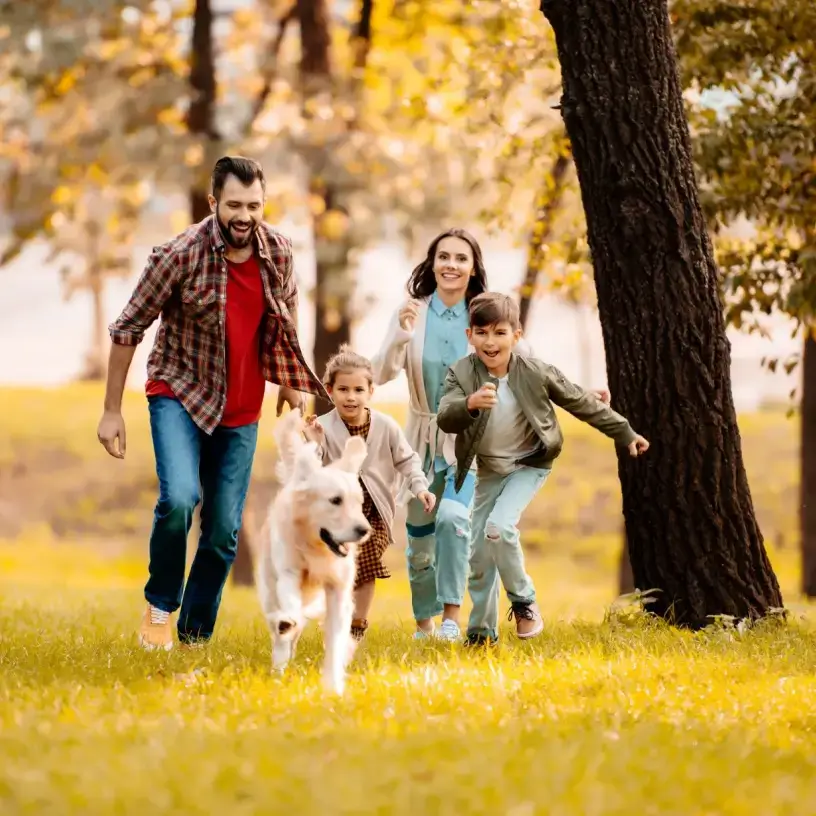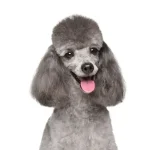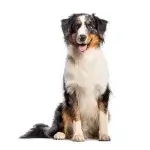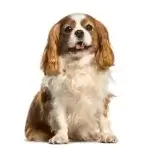Home / Compare Pet Insurance / Best family dogs

Key takeaways
- The ideal family dog depends on your lifestyle, living situation and household energy levels. It’s important to match a dog’s temperament and needs with your family’s dynamics, whether you have young children, live in an apartment or enjoy outdoor activities.
- Dog ownership requires careful thought about time, space and financial commitment. High-energy dogs may not suit families with busy schedules or limited space, while calmer breeds can adapt to smaller homes. Financial responsibilities, including vet care, grooming and insurance, should also be factored into your decision.
- Each breed has unique traits that influence how well it fits into family life. Researching the breed’s exercise requirements, temperament, grooming needs and potential health issues is important before bringing a dog into your home to ensure a good match for your family.
Choosing the best family dog breed
Finding the appropriate dog for your family can be exciting and daunting, especially when juggling the demands of small children, living settings and varying energy levels. Choosing the ideal family dog in Australia depends enormously on your family’s requirements, lifestyle and living situation.
From athletic, high-energy dogs like the Cocker Spaniel and Border Collie to smaller, friendly breeds like the Cavalier King Charles Spaniel, there’s a dog for every household. Research properly and evaluate your living situation and time limits. Most importantly, be ready to provide your new, cutest four-legged family member with a loving and secure home; being a new pet owner can be daunting, but your furry friend will thrive as a family member with proper training, patience, and lots of love.
Best dog breeds for families in Australia
Many dog breeds adapt well to family life, offering unique traits for various household dynamics. Here’s a look at some breeds that will make great family pets, regardless of the household size.1,2
Border Collie
 Border Collies are medium-sized dogs that are bred for herding.5 They are highly intelligent, active dogs that thrive in homes with plenty of exercise and mental stimulation. They’re great for families who enjoy outdoor activities and have older kids who can engage with a high-energy dog.
Border Collies are medium-sized dogs that are bred for herding.5 They are highly intelligent, active dogs that thrive in homes with plenty of exercise and mental stimulation. They’re great for families who enjoy outdoor activities and have older kids who can engage with a high-energy dog.
Boxer
 Boxers are known for their boundless energy and loyalty.6 They are excellent with kids and can be protective, making them great family watchdogs. With the proper training and exercise, Boxers make loyal and loving companions.
Boxers are known for their boundless energy and loyalty.6 They are excellent with kids and can be protective, making them great family watchdogs. With the proper training and exercise, Boxers make loyal and loving companions.
Standard Poodle
 The Standard Poodle is a highly intelligent, trainable and versatile dog, originally bred as a water retriever.7 Known for their friendly and loyal nature, Standard Poodles make great family pets and are especially suited for active households. They are hypoallergenic and require frequent grooming due to their dense, curly coat. These dogs need regular physical and mental exercise, thriving with walks, swimming and training games.
The Standard Poodle is a highly intelligent, trainable and versatile dog, originally bred as a water retriever.7 Known for their friendly and loyal nature, Standard Poodles make great family pets and are especially suited for active households. They are hypoallergenic and require frequent grooming due to their dense, curly coat. These dogs need regular physical and mental exercise, thriving with walks, swimming and training games.
Australian Shepherd
 Australian Shepherds are playful, intelligent and great for active families.8 They need plenty of mental and physical exercise but are incredibly loyal and affectionate once they become part of the family.
Australian Shepherds are playful, intelligent and great for active families.8 They need plenty of mental and physical exercise but are incredibly loyal and affectionate once they become part of the family.
Pugs
 Pugs are a small size breed known for their laid-back nature and adaptability.9 They’re excellent for owners who love to cuddle with their pets and families living in apartments and are great with kids, making them low-maintenance but affectionate family pets.
Pugs are a small size breed known for their laid-back nature and adaptability.9 They’re excellent for owners who love to cuddle with their pets and families living in apartments and are great with kids, making them low-maintenance but affectionate family pets.
Best dogs for kids
When choosing a dog that will get along well with young children, you’ll want a breed known for its gentle temperament, loyalty and patience. Here are some of the top picks for kid-friendly dogs in Australia.3,4,
Labrador Retriever
 Labrador Retrievers are renowned for their friendly nature, intelligence and high energy, making them one of the best dogs for families with children.10 They are playful, even-tempered and gentle with kids. Their loyalty and trainability make them great companion dogs and easy to manage in a family setting.
Labrador Retrievers are renowned for their friendly nature, intelligence and high energy, making them one of the best dogs for families with children.10 They are playful, even-tempered and gentle with kids. Their loyalty and trainability make them great companion dogs and easy to manage in a family setting.
Golden Retriever
 Golden Retrievers are famous for their affectionate and gentle personalities.11 These pooches are known as gentle giants, being incredibly patient, love to play and often tolerate kids. Goldens are highly intelligent and easy to train, making them family-friendly and great for first-time dog owners.
Golden Retrievers are famous for their affectionate and gentle personalities.11 These pooches are known as gentle giants, being incredibly patient, love to play and often tolerate kids. Goldens are highly intelligent and easy to train, making them family-friendly and great for first-time dog owners.
Cavalier King Charles Spaniel
 This small dog breed is known for its affectionate nature and adaptability to different living spaces.12 Cavaliers are gentle and easy-going and get along well with children and other pets. Their size and demeanour make them perfect for families living in apartments or houses with smaller yards.
This small dog breed is known for its affectionate nature and adaptability to different living spaces.12 Cavaliers are gentle and easy-going and get along well with children and other pets. Their size and demeanour make them perfect for families living in apartments or houses with smaller yards.
Beagle
 Beagles are social, fun-loving and full of energy. They’re good with kids and enjoy being around people, making them excellent family pets.13 Beagles are curious and playful and love exploring, making them great playmates for the children.
Beagles are social, fun-loving and full of energy. They’re good with kids and enjoy being around people, making them excellent family pets.13 Beagles are curious and playful and love exploring, making them great playmates for the children.
Cocker Spaniels
 With their smooth coat and long, floppy ears, children will enjoy cuddling with a Cocker Spaniel, and this affectionate breed will gladly snuggle them back!14 Cocker Spaniels are very attached to their families and will seek their attention, which is ideal for children who have a lot of love to give.
With their smooth coat and long, floppy ears, children will enjoy cuddling with a Cocker Spaniel, and this affectionate breed will gladly snuggle them back!14 Cocker Spaniels are very attached to their families and will seek their attention, which is ideal for children who have a lot of love to give.
Cocker Spaniels make excellent pets because they’re intelligent and eager to please. When it comes to exercise, they don’t need a big yard and will be content with a daily stroll. Cocker Spaniels are one of the most popular dog breeds among families because they’re kind and lovely and enjoy playing and participating in family activities.
Things to take note before getting a dog
Getting a dog is a big commitment that requires planning and consideration to ensure a good match for your lifestyle and a stable, happy environment for the dog. Responsible planning ensures a stable, loving home environment for your dog and a joyful experience for the whole family.
Here are some key things to consider before bringing a dog into your home.
Time and lifestyle commitment
Dogs require daily exercise, mental stimulation and attention. High-energy breeds like Border Collies or Labradors need lots of activity and playtime, while others like French Bulldogs may be more relaxed.
If you have a busy lifestyle, consider whether you’ll have enough time for training, socialisation and daily care. Lack of time and interaction can lead to separation anxiety and behavioural issues in your dog, especially in social or high-energy breeds.
Space and living environment
Some breeds need a lot of space to thrive. Larger dogs or active breeds like Australian Shepherds may need a yard, while smaller or low-energy breeds like Cavoodles can adapt well to apartment living.
Consider if your home environment is safe for a dog, with enough space to play and sleep and without hazards that could pose risks to their health.
Exercise and mental stimulation needs
Many breeds require regular exercise to stay healthy and prevent boredom. Active breeds like Labradors or Border Collies need lots of exercise, outdoor time and activities that challenge them mentally, while breeds like Bulldogs are lower-energy and require less exercise.
Some breeds may become anxious or destructive without adequate physical and mental activity.
Cost and financial responsibility
Dog ownership comes with ongoing costs, including food, veterinary care, vaccinations, grooming and pet insurance. Medical expenses, especially for breeds prone to health issues (e.g. Bulldogs), can also be significant.
Ensure your budget accommodates these costs, as they are essential for your pet’s well-being and longevity.
Allergies and grooming needs
Some breeds are more allergy-friendly than others. Hypoallergenic breeds like Standard Poodles or Poodle mixes (e.g. Cavoodles) may be better for families with allergies.
Grooming needs vary widely among breeds; long-haired or double-coated dogs often need regular grooming, while short-haired breeds may require less maintenance.
Training and temperament
Different breeds have varying levels of trainability. Intelligent breeds like Golden Retrievers are generally easier to train, while independent breeds like Dachshunds may require more patience.
Also, consider the breed’s temperament. Some breeds are very affectionate and social, while others may be more reserved. Researching the temperament that best fits your family can lead to a smoother experience.
Compatibility with children and other pets
If you have kids or other pets, look for family-friendly, patient breeds like Golden Retrievers or Labradors. Some breeds or rescue dogs may have a high prey drive or be less tolerant of small children.
Socialising the dog with family members and other pets early on is also essential to prevent territorial behaviour.
Lifespan and long-term commitment
Depending on the breed, dogs live an average of 10-15 years, so adopting a dog means committing to caring for it for its entire life.
Consider how your life may change in the coming years and whether you can continue providing for a dog’s needs throughout their lifespan.
Pet insurance for your family dog
 Purchasing pet insurance for your family dog is a terrific method to help guard against the possible financial strain if your dog becomes sick or has an accident. Pet insurance can help cover some of the vet bills, enabling you to focus on keeping your pet healthy again.
Purchasing pet insurance for your family dog is a terrific method to help guard against the possible financial strain if your dog becomes sick or has an accident. Pet insurance can help cover some of the vet bills, enabling you to focus on keeping your pet healthy again.
We can assist you whether you’re searching for a pet insurance plan or would like to learn how your existing cover stacks up against some of the other options available. You can also compare various products from different Australian providers or view a range of pet insurance options, their benefits, and more. Always read the Product Disclosure Statement (PDS) and Target Market Determination (TMD) to know what is and isn’t covered in your pet insurance policy and whether the product is suitable for you.
Meet our pet insurance expert, Adrian Taylor
As a General Insurance expert with over 13 years’ experience in financial services, Adrian Taylor knows that dogs and cats get themselves into all sorts of mischief. One part of Adrian’s work is to help empower consumers to understand how pet insurance can help save them from exorbitant vet bills when their pet gets injured or falls ill.
Want to know about pet insurance?
1The American Kennel Club. Best Family Dogs. Accessed November 2024
2Purina. Best Dog Breeds for a Family. Accessed November 2024
3Petbarn. Top 5 best family-friendly dog breeds. Last updated February 2024. Accessed November 2024
4Petstock. Top 20 Family Dogs Australia. Last updated July 2024. Accessed November 2024.
5American Kennel Club. Border Collie Breed Traits and Characteristics. Accessed November 2025.
6American Kennel Club. Boxer Breed Traits and Characteristics. Accessed November 2025.
7American Kennel Club. Poodle Breed Traits and Characteristics. Accessed November 2025.
8American Kennel Club. Australian Shepherd Breed Traits and Characteristics. Accessed November 2025.
9American Kennel Club. Pugs Breed Traits and Characteristics. Accessed November 2025.
10American Kennel Club. Labrador Retriever Breed Traits and Characteristics. Accessed November 2025.
11American Kennel Club. Golden Retriever Breed Traits and Characteristics. Accessed November 2025.
12American Kennel Club. Cavalier King Charles Spaniel Breed Traits and Characteristics. Accessed November 2025.
13American Kennel Club. Beagle Breed Traits and Characteristics. Accessed November 2025.
14American Kennel Club. Cocker Spaniels Breed Traits and Characteristics. Accessed November 2025.



